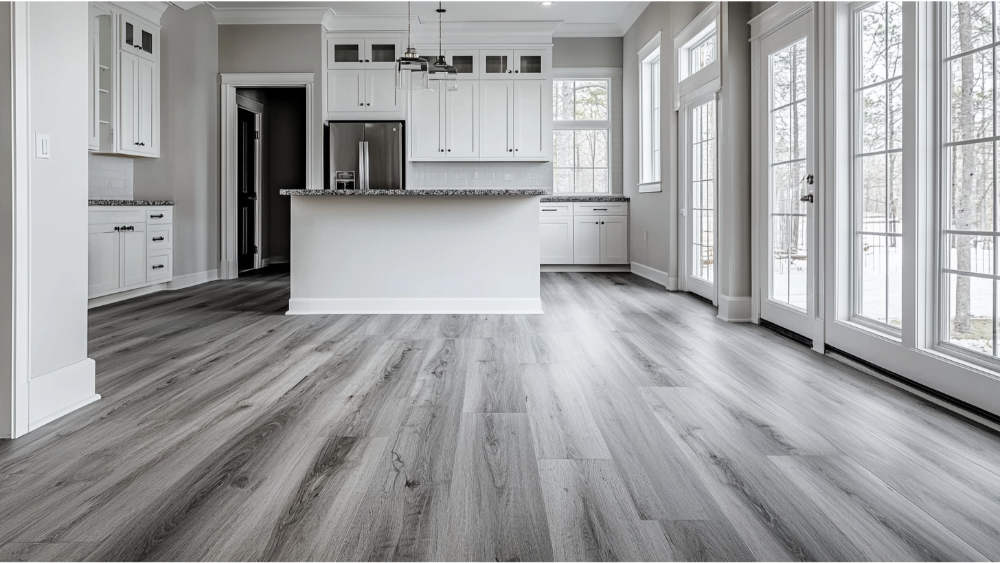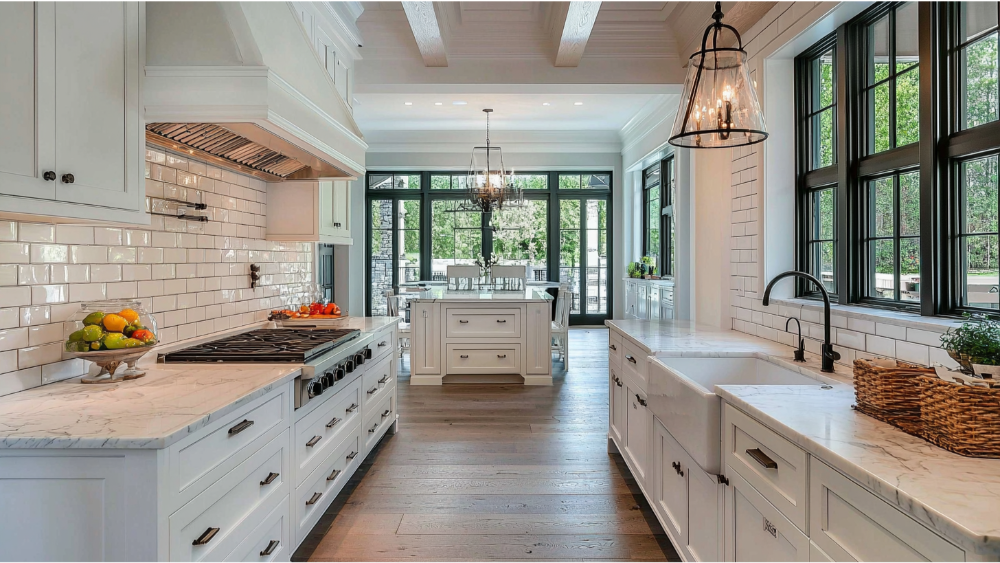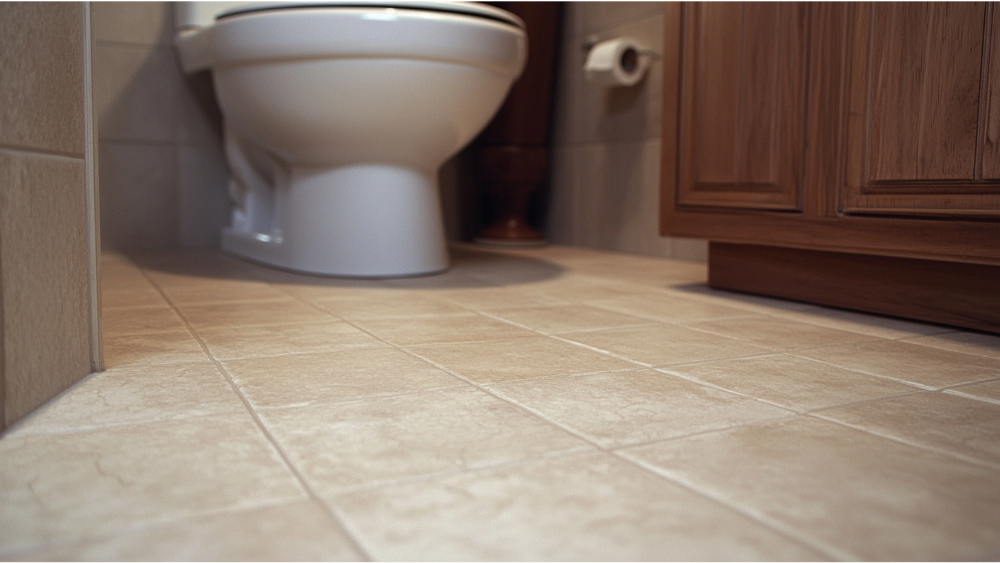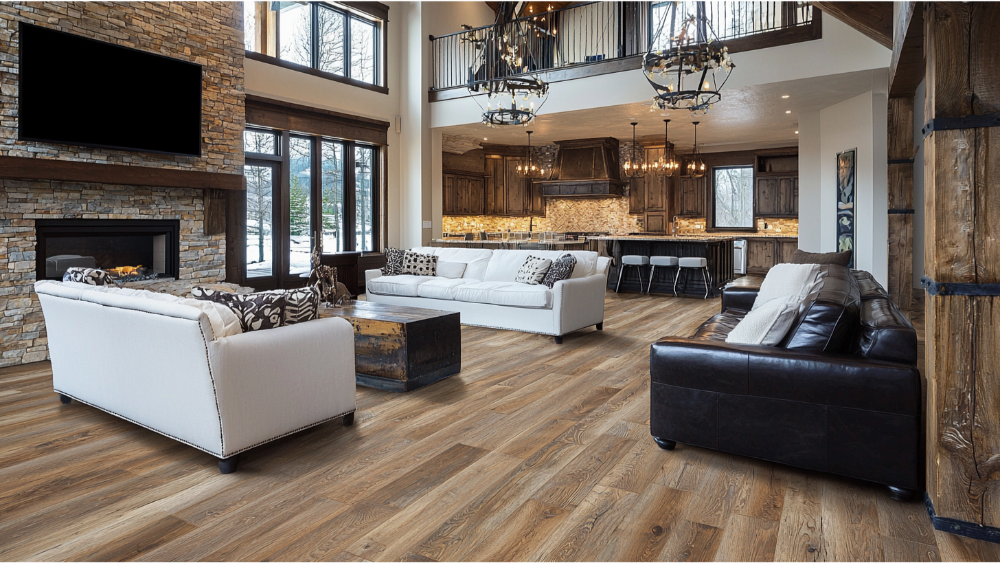Installing vinyl flooring over tile is a common question for homeowners looking to refresh their floors without a full renovation. Vinyl flooring is versatile, durable, and often easier to install compared to other materials. But before proceeding, it’s important to consider key factors such as the condition of the existing tile and the type of vinyl flooring being used.
Is It Possible to Install Vinyl Over Tile?
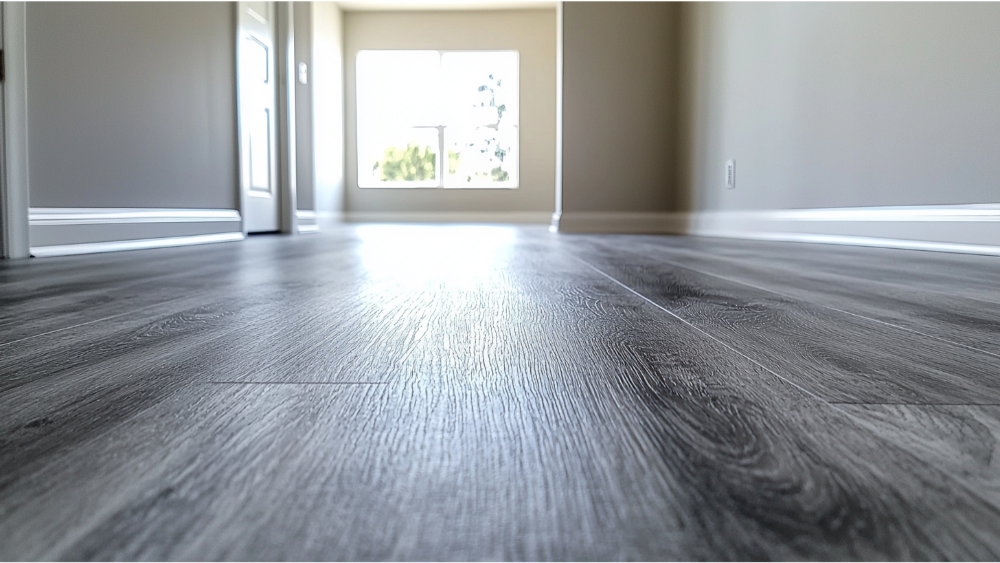
Yes, it is possible to install vinyl flooring over tile, including vinyl planks. However, certain conditions must be met to ensure a successful and long-lasting installation. The compatibility of vinyl plank flooring with existing tile floors depends on the surface’s condition and preparation.
Key Conditions for Installing Vinyl Plank Flooring Over Tile:
Flat Surface
The existing tile floors must be level and free of significant dips or high points. Uneven areas can cause issues with the vinyl planks over time.
Stable Tiles
Make sure the existing tile floors are firmly secured. Loose, cracked, or unstable tiles should be repaired or removed before proceeding.
Clean Surface
The tiled surface must be thoroughly cleaned of dirt, grease, and other residues to ensure proper adhesion for the vinyl flooring.
Thin Grout Lines
Wide or deep grout lines should be filled in to create an even surface. Uneven grout lines may lead to visible imperfections when you install vinyl plank flooring.
Moisture-Free
Ensure the tiles and subfloor are completely dry and free of moisture, as excess moisture can damage vinyl planks over time.
5 Pros of Installing Vinyl Over Tile
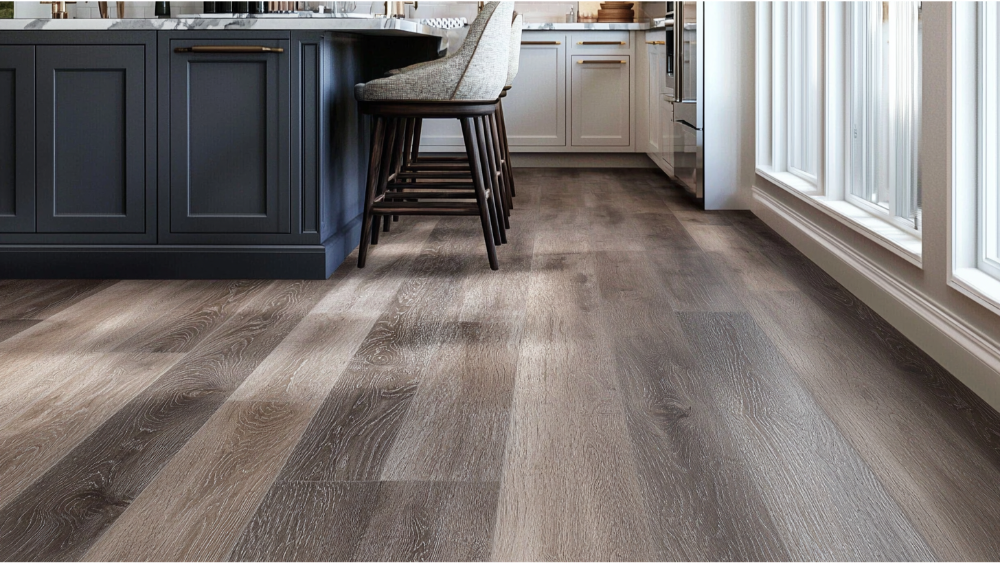
1 | Cost-Effective Solution
Installing luxury vinyl flooring over existing tile flooring is a budget-friendly option because it eliminates the need for costly demolition. This process saves both time and labor while reducing waste, making it an environmentally conscious choice. Luxury vinyl planks also offer high-quality finishes that mimic the look of expensive materials, giving your space an upgraded aesthetic.
2 | Ease of Installation
Luxury vinyl flooring is designed for straightforward installation and can often be done with minimal tools and expertise. Its ability to be installed over ceramic tile without excessive preparation makes it a suitable option for quick upgrades. Laminate flooring or other alternatives may require more cumbersome preparation, but vinyl simplifies the process while maintaining durability.
3 | Durability and Longevity
Vinyl plank flooring is highly durable and resistant to wear, making it ideal for high-traffic areas. Its composition allows it to stand up against scratches, stains, and moisture better than laminate flooring or other materials. When installed over a stable ceramic tile base, luxury vinyl planks provide an even more robust and long-lasting flooring option.
4 | Aesthetically Versatile
Luxury vinyl flooring comes in a wide variety of designs, colors, and textures, allowing you to customize the appearance of your space. Whether you’re looking for a wood-like finish or a modern stone look, vinyl planks seamlessly replicate these styles. Over tile flooring, it provides a fresh and updated look without sacrificing the authenticity of high-end finishes.
5 | Comfort and Insulation
Vinyl plank flooring provides a softer and warmer feel underfoot compared to ceramic tile. It improves insulation, making rooms feel cozier while helping to reduce energy costs in cooler climates. This added comfort can make a noticeable difference, particularly in areas where tile flooring feels cold and rigid.
5 Cons and Potential Challenges
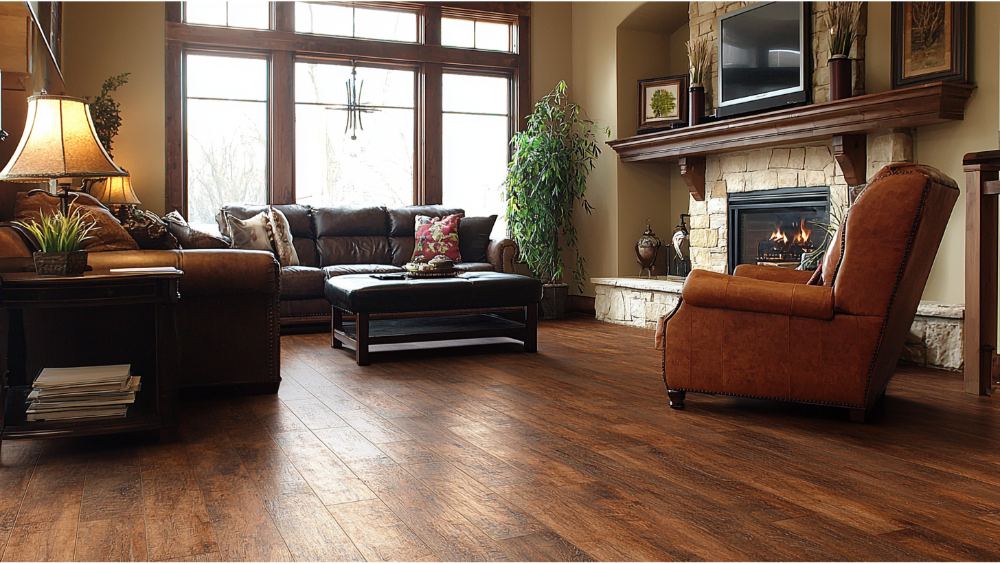
1 | Limited Durability in Certain Conditions
While luxury vinyl tile is highly durable, it can still be prone to scratches and dents from heavy furniture or sharp objects. Over time, areas with high foot traffic may show signs of wear, especially if the existing flooring underneath is not level. Proper preparation and care are essential when you lay vinyl flooring to ensure its longevity and maintain its appearance.
2 | Subfloor Preparation Requirements
Installing luxury vinyl tile often necessitates detailed subfloor preparation, as imperfections in the subfloor can transfer to the surface. Flattening or repairing the existing flooring beforehand can increase both time and cost. Without proper preparation, the final look of the sheet vinyl may not meet expectations.
3 | Potential for Fading
Prolonged exposure to direct sunlight can cause the colors of luxury vinyl tile to fade over time. This is particularly noticeable in rooms without adequate window coverings, where UV rays can affect the flooring. Using blinds or UV-protective films can help mitigate this issue and preserve the color of the vinyl.
4 | Environmental Concerns
Luxury vinyl tile, while affordable and stylish, is made primarily from PVC, a material that lacks sustainability. Disposal of old vinyl or sheet vinyl flooring can contribute to environmental waste since it is not biodegradable. Concerns over the material’s environmental impact may influence purchasing decisions for eco-conscious homeowners.
5 | Moisture Trapping Risks
Improper installation over existing flooring can trap moisture underneath the vinyl, leading to mold or mildew. This is especially problematic in humid areas or spaces prone to leaks, such as bathrooms or basements. Ensuring the subfloor is completely dry before you lay vinyl flooring is critical to preventing long-term damage.
6 Tips for Installing Vinyl Flooring Over Tile
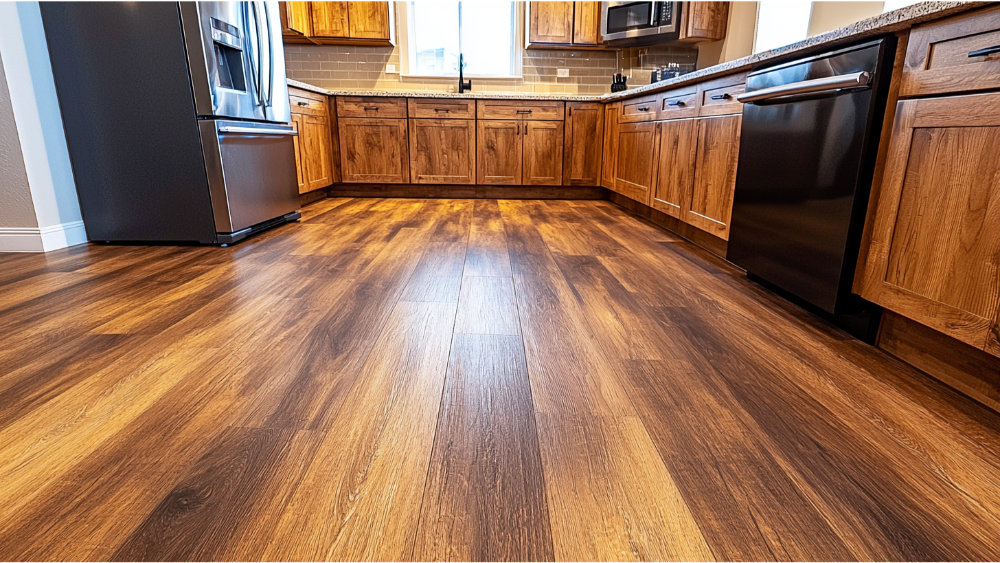
1 | Ensure a Smooth Surface
Before installing vinyl flooring, check that the tile surface is smooth and free of imperfections. Uneven tiles or grout lines might cause the vinyl to settle unevenly, which can lead to damage over time. Use a leveling compound to fill in any gaps or irregularities in porcelain tile or other surfaces.
2 | Clean the Tile Thoroughly
Dirt, debris, or grease left on the existing tile can interfere with the adhesive or hinder proper installation. Make sure to thoroughly clean porcelain or wood flooring beforehand, using a degreaser if necessary. Allow the surface to dry entirely before proceeding to avoid trapping moisture.
3 | Consider Using Underlayment
An underlayment provides a cushion, making the floor more comfortable and reducing noise. It also adds an extra barrier against moisture, which is crucial for areas like bathrooms where water can seep through. Use underlayment compatible with both vinyl flooring and your existing hardwood or porcelain tile base.
4 | Match Vinyl Thickness to Your Flooring Needs
Thicker vinyl planks help cover minor imperfections and better mimic the durability and appearance of wood flooring. However, avoid excessively thick planks if transitions to other parts of the home are a concern. Aim for a balance between durability and ease of installation over your tile.
5 | Test Adhesion with a Small Section First
Install a test piece of vinyl flooring to ensure it adheres well to your tile under the chosen conditions. Problems like uneven adhesion can be identified early and corrected before moving forward. This is especially crucial when transitioning from a wood flooring section to a porcelain tile area.
6 | Use a High-Quality Underlayment
Consider using a high-quality underlayment beneath your vinyl flooring to create a smoother surface and improve sound insulation. This can help address minor imperfections in the tile and provide additional cushioning for a more comfortable feel underfoot. Be sure to choose an underlayment compatible with your type of vinyl flooring for optimal results.
Frequently Asked Can You Put Vinyl Flooring Over Tile? Questions
What Type of Flooring Can I Put Over Ceramic Tile?
Several types of flooring can be installed over ceramic tile, offering flexibility based on your preferences and needs. Vinyl flooring, both in planks and sheets, is a popular choice due to its durability and ease of installation. Laminate flooring is another option, providing a stylish and cost-effective solution. Engineered hardwood flooring can be installed over ceramic tile, giving your space a refined and timeless appearance. Always ensure the tile surface is clean and level for the best results.
How can I cover my floor tiles without removing them?
If you want to cover your floor tiles without removing them, there are several practical options available. One solution is to use peel-and-stick vinyl tiles, which are easy to install and create a fresh look. Another approach is to lay down a floating floor, such as laminate or engineered wood, which requires no adhesive and can cover imperfections seamlessly. Large area rugs or carpet tiles can provide a quick and decorative way to conceal the tiles while adding comfort.
Do you need underlay for vinyl flooring on tiles?
Underlay is typically not required for vinyl flooring when installed over tiles, as vinyl is designed to lay flat and adhere directly to the existing surface. However, if the tiles are uneven or have deep grout lines, using a thin underlay can help create a smoother base and improve the final appearance. Additionally, underlay can provide extra insulation and soundproofing benefits for the flooring. It’s important to check the specific requirements of your vinyl flooring product to ensure proper installation.
Conclusion
Proper preparation and installation are key to achieving the best results with vinyl flooring over tiles. Assessing the condition of the existing surface and addressing any uneven areas can significantly enhance the appearance and longevity of the flooring. While underlay is not always necessary, it can offer added benefits like insulation and soundproofing, depending on your specific needs. Always follow the manufacturer’s guidelines to ensure the product performs as intended. By taking these steps, you can create a durable, visually appealing, and functional flooring solution for your space.


